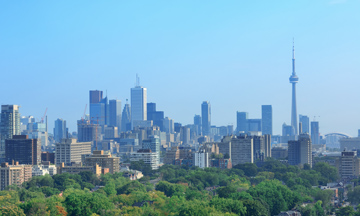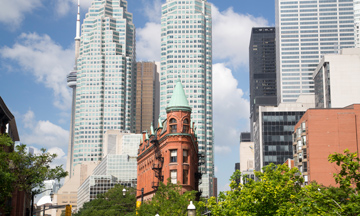In addition to their unique looks, circular homes are often more energy efficient and can withstand natural disasters better than their square alternatives
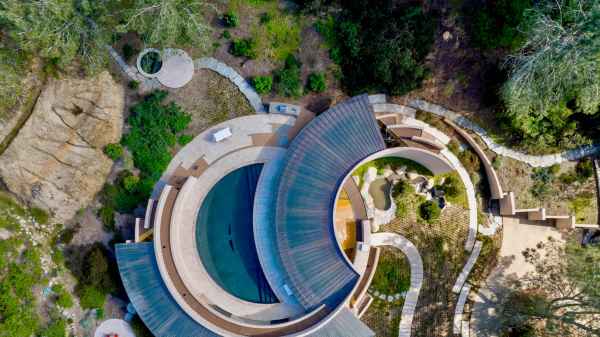
Ask a child to draw a neighborhood, and they’ll likely offer an image of a squares with a triangles on top, not doodles of round houses. Though walls with right angles and pitched roofs may be the most common archetype when it comes to residences, circular homes are arguably more interesting, simply because of how unique they are. Round design stretches back centuries—think igloos, teepees, and yurts—and the designs of many historic cultures are often based on circular forms.
Round houses offer many benefits. In addition to simply requiring less building materials, they are typically more energy efficient compared to square homes. Circular homes are also more resistant to hurricanes and extreme weather, as wind blows around them, diverting a buildup of pressure on one side.
Throughout design history, a number of (literal) outside-the-box thinkers have tried to reinvigorate interest in round design (think Buckminster Fuller), and yet, the shape is still generally the exception, not the rule, when it comes to residential architecture. Nonetheless, there is still an incredible collection of round houses around the world to examine. Below are the world’s 10 most remarkable round houses.
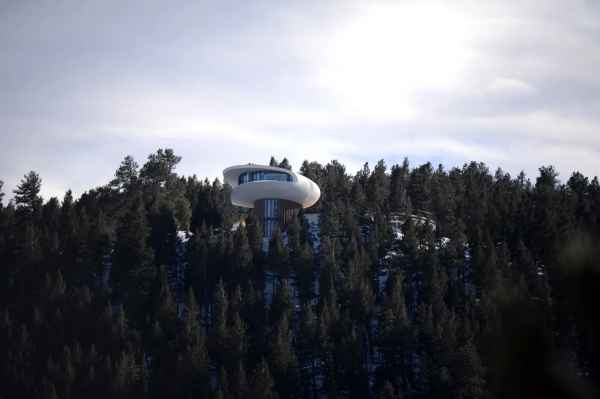
Sculptured House (Genesee Mountain, Colorado)
Architect Charles Deaton is frequently credited with saying that “if people do not have angles, then we should not live in boxes.” Sculptured House in Colorado is his circular residence masterpiece. It was featured prominently in the movie Woody Allen movie Sleeper, and is now owned by a local couple.
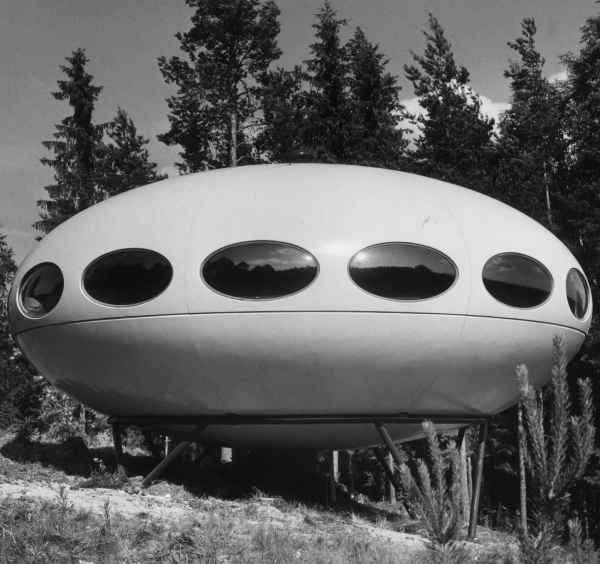
Futuro Houses
In the late 1960s, Finnish architect Matti Suuronen designed a line of prefabricated circular residences he called Futuro Houses. Sometimes described as UFO homes, the unique homes reflect an era when civilization was obsessed with space and its exploration. However, only 100 or so of the homes were ever built, and it’s estimated that only about 60 still remain.
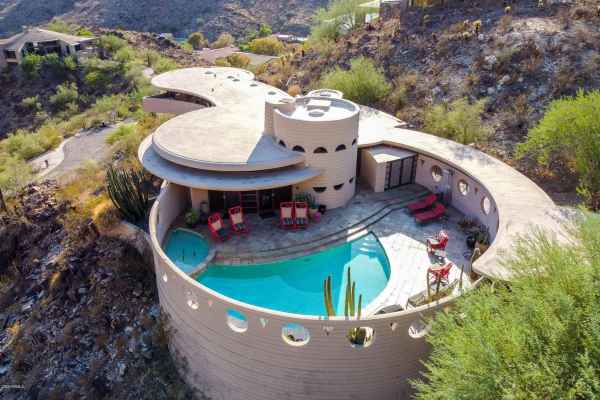
Norman Lykes House (Phoenix)
The Norman Lykes House, located in Phoenix, was the last residential project Frank Lloyd Wright worked on before he passed. The home is based on a collection of interlocking circles and is among his most incredible creations. The residence is currently on the market as a fractional sale for six owners at $1.5 million per share.
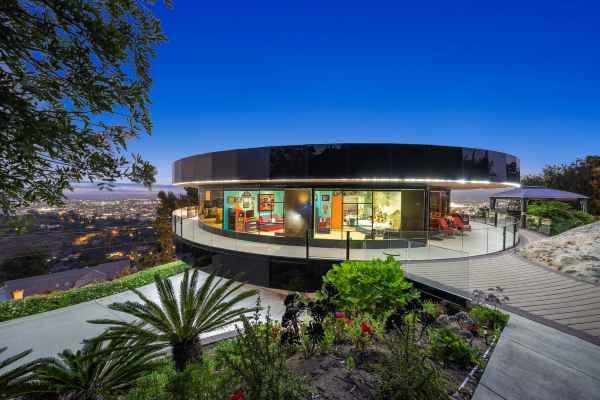
The Rotating House (San Diego, California)
Al and Janet Johnstone, a local couple from San Diego, knew they wanted to build a round home. But when they were deciding which room should overlook which view, they had the idea to rotate it. The home, located on Mount Helix, can spin in either direction and complete a full rotation in as little as 33 minutes or as slow as 24 hours. The Johnstones built and designed the home themselves, and the property was listed for sale and sold to new owners last year.
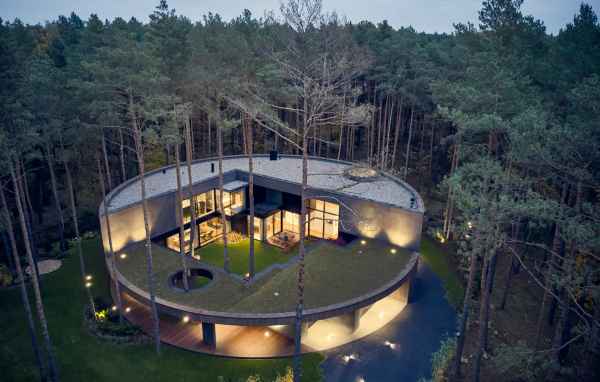
Circle Wood House (Izabelin, Poland)
Polish architecture firm Mobius designed this circular house in their native country. The home is inspired a cut tree trunk, which makes sense given its location in the middle of a forest.

The Wing (San Diego, California)
Designed by Wallace E. Cunningham, who studied at Frank Lloyd Wright’s Taleisin West, the Wing house is located near San Diego, California. Designed in the late 1970s and built from steel, concrete, and glass, this was Cunningham’s first independent commission. The sinuous property is currently for sale and listed through the Altman Brothers.
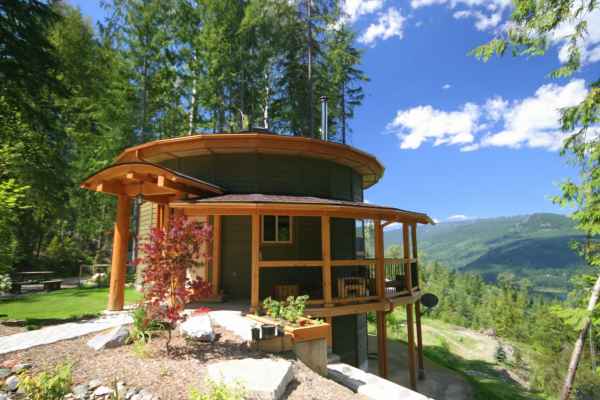
Mandala Home (Nelson, Canada)
Nelson, British Columbia–based home builder, Mandala, offers a wide collection of circular homes. This one, from the company’s Aspen series, is an Energy Star–certified home. The model features two bedrooms, a loft, and a wraparound deck.
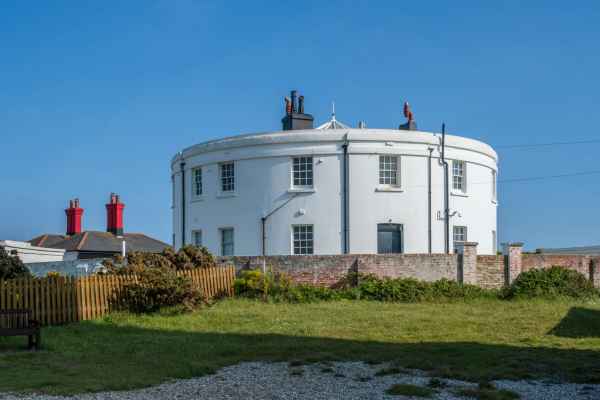
The Roundhouse (Dungeness, England)
Appropriately named the Roundhouse, this white home on the Kent, UK, coastline was once built around the base of a lighthouse in Dungeness. Later, a more modern tower was constructed in its place, and the circular structure was turned into quarters for lighthouse keepers and their families.
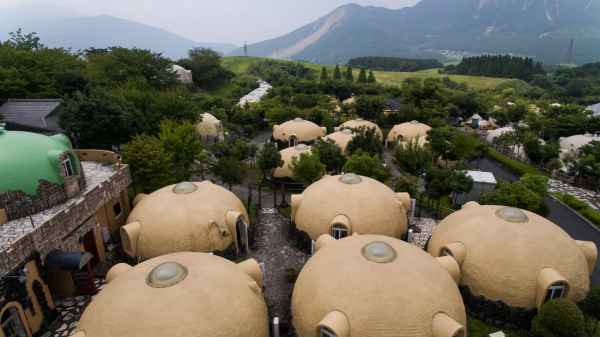
Aso Farm Land (Kumamoto Prefecture, Japan)
In the Kumamoto prefecture of Japan, over 400 round dome houses stand near the base of a volcano, built as overnight accommodations for a local theme park. The cottages are made from polystyrene foam and many are painted to resemble various animals and sweets. In 2016, the homes withstood the 7.0 magnitude earthquake the struck the area.
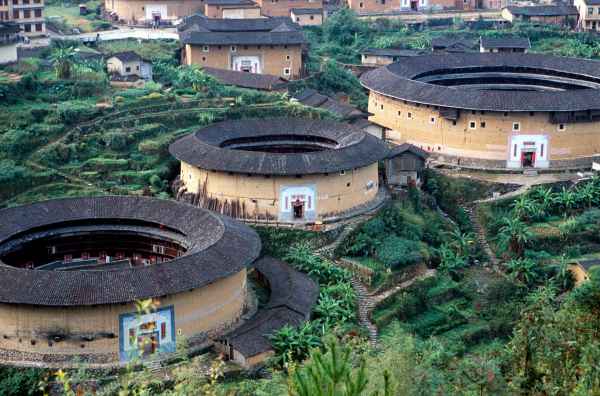
Tulou Homes (Fujian, China)
Constructed between the 15th and 20th centuries, Tulou homes were built as defense structures. Made from rammed earth and inward facing, each building housed a whole clan and were often described as “a little kingdom for the family” or “bustling small city.” Now a UNESCO World Heritage Site, the diplomatic organization describes the homes as “exceptional examples of a building tradition and function exemplifying a particular type of communal living and defensive organization, and, in terms of their harmonious relationship with their environment, an outstanding example of human settlement.”
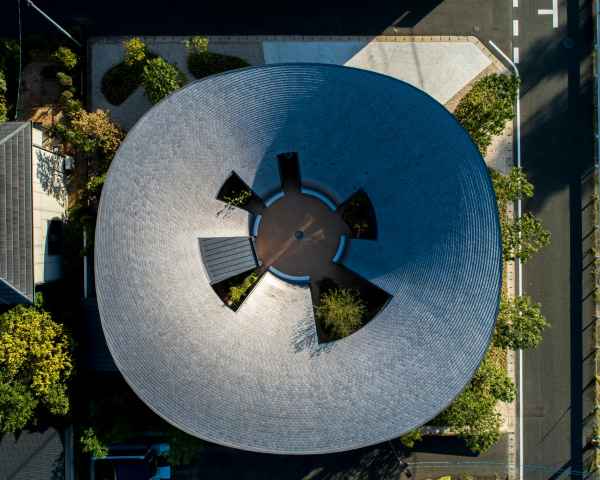
Sky Vessel House (Fukuoka, Japan)
This home, designed by Japanese firm NKS2 Architects, could be described as a modern interpretation of the Tulou Homes. Only, instead of trying to protect inhabitants from enemy armies, the home safeguards residents from noise and other disturbances in a busy neighborhood. All of the windows are located on the inside of the home and overlook a central courtyard, offering superb privacy.
AD by Katherine McLaughlin, April 2024

